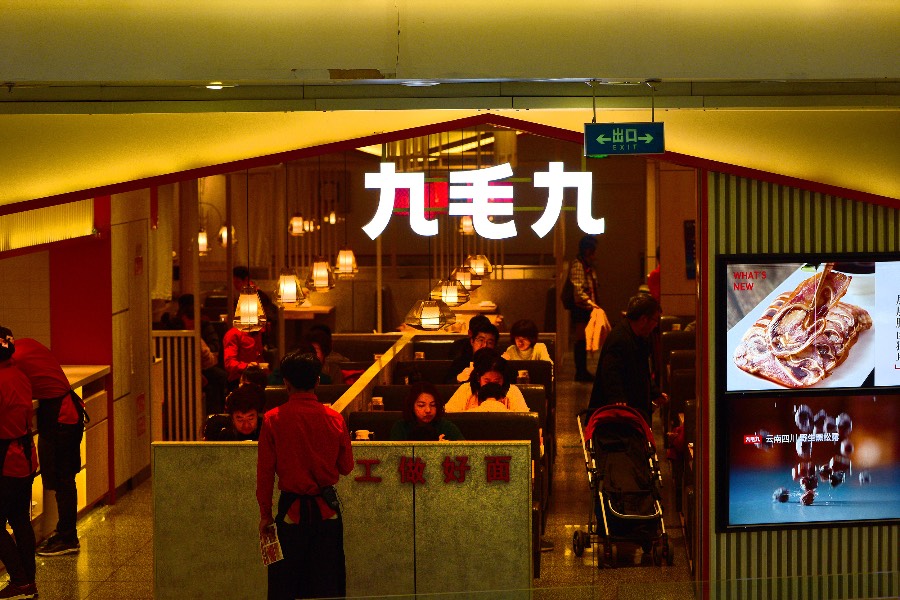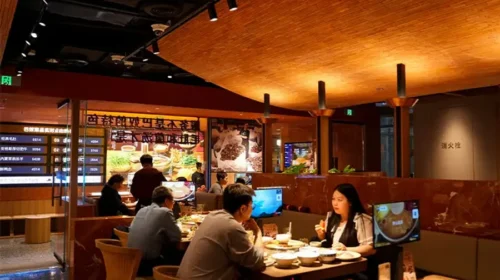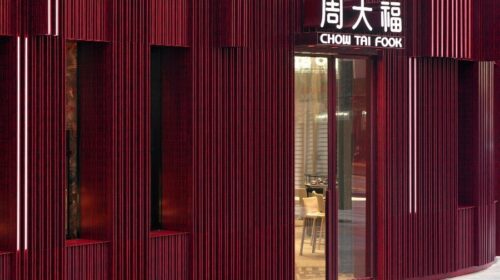Freshly prepared ‘sauerkraut fish’: Jiumaojiu’s salvation or a new sinkhole?

Once a dominant force on China’s dining scene, the restaurant operator is hoping to revive its business by using live fish killed and prepared on-site for its signature dish
Key Takeaways:
- Same-store sales for Jiumaojiu’s Tai Er sauerkraut fish chain fell 9.3% in the third quarter, continuing to improve from even bigger declines in previous quarters
- The company upgraded 106 Tai Er outlets to a new format focused on fresh fish by the end of September, with 200 stores targeted by year-end
By Lee Shih Ta
Oh, for the good old days. That’s what restaurant operator Jiumaojiu International Holdings Ltd. (9922.HK) must be thinking lately, recalling its earlier rise to stardom that began with a 56% jump in its shares in their 2020 Hong Kong trading debut. The company looked like king of the trendy Chinese restaurant scene at that time, charming diners with its signature “sauerkraut fish” served at its Tai Er chain, known for long waits outside at peak eating hours.
Fast forward five years, when the script has changed dramatically. Jiumaojiu’s current market capitalization of about HK$2.9 billion ($372 million) represents a gut-wrenching 95% plunge from its peak near HK$55 billion. And with its stock now down from a high of HK$38.40 to just the HK$2, sarcastic investors are derisively joking it’s worth just the “99 cents” that’s the meaning of its Chinese name.
To try and halt its slide, Jiumaojiu has tried to win back diners with a brand refresh that includes reverting to the time-honored but fast disappearing practice of killing and preparing live fish on site for its signature dish. That campaign could be showing some early positive results, based on the company’s latest quarterly report released last week.
Jiumaojiu’s critical inflection came in 2024 when the company’s profit plunged 87% to 55.8 million yuan ($7.84 million), even as it managed to eke out 1.47% revenue growth to 6.07 billion yuan for the year. Its store-level operating profit nosedived over 30% for the year to 748 million yuan.
Jiumaojiu’s triumphs and subsequent fall stemmed from a single, high-octane formula that ran out of fuel almost as quickly as it powered the company to earlier glory. That equation was crafted in 2015 when the company pivoted from Northwestern Chinese cuisine served at its namesake Jiu Mao Jiu chain to Tai Er sauerkraut fish. Its new formula centered on a laser-like focus on a single trendy product that could be served over and over using standardized techniques. That rapidly lifted Tai Er to new heights by combining the focused menu with lean management teams and extremely high table turnover rates.
The minimalist blueprint soared in a heyday for Chinese shopping malls, which were fertile ground for that type of chain. Tai Er’s combination of compact layouts, low labor costs and rapid dish preparation was the embodiment of Gen Z social dining tastes. But rivals quickly flooded into the sauerkraut fish space, and customers wanted more choices, making a formerly hyper-focused winner increasingly vulnerable.
High prices for pre-made dishes
As diners began to grow fickle, a wave of biting criticism broke out over Tai Er’s use of pre-made dishes, causing increasingly skeptical customers to abandon the chain. One viral social media video targeted the company’s supposed practice of serving up its signature dish in just seven minutes.
The chain’s line of do-it-yourself sauerkraut fish kits added to the “ready-made” image, and the product itself was undermined by major supermarket chains like Freshippo and Sam’s Club offering up similar products for lower prices.
In an effort to halt its slide, Jiumaojiu went back to the future with a “fresh and live” campaign offering cooked-to-order sauerkraut fish at Tai Er restaurants. Kicking off in March, the fresh model emphasized not only live fish, but also the use of fresh chicken and beef. Killing and cooking of fish are performed on the spot, and an open kitchen allows customers to see the entire process. Restaurant interiors were also completely redesigned, and the menu expanded with new hot stir-fried dishes to offer more variety, especially for group dining.
The overhaul had yet to show significant results in the company’s results for the first half of 2025, with Jiumaojiu’s revenue down 10.1% year-over-year to 2.75 billion yuan, while its profit dropped 16% to 60.7 million yuan. Its store count also fell year-on-year from 771 to 729 by the end of June, and further to 686 by the end of the third quarter.
Tai Er remained the company’s main revenue contributor but continued to struggle as its sales fell 13.3% year-on-year to 1.95 billion yuan, its table turnover rate fell to 3.1 times a day from 3.8 times, and same-store sales fell 19%. In one small positive sign, average spending per customer rose to 73 yuan from 71 yuan.
Fruits of the overhaul began to become more apparent in the third quarter, as Tai Er’s year-over-year decline in average daily same-store sales narrowed to 9.3%, marking a third consecutive quarter of improvement. Table turnover also rebounded to 3.3 times, and average spending per customer increased to 74 yuan.
Path to freshness
Management highlighted that its stores in top-tier cities like Beijing and Shanghai achieved year-over-year same-store sales growth, demonstrating the growing impact of the overhaul, which the company calls its Tai Er “Fresh and Lively 5.0 Model.” By the end of September, 106 outlets had completed the rollout. The new look will expand to more than 200 by year-end, with full implementation across the entire chain within two years.
But emphasizing “fresh” comes at a cost. The company disclosed that expenses for wasted live fish, cold-chain logistics and additional staff have shaved approximately 1 to 2 percentage points off store-level gross margins. They added a recovery for that metric is expected over the mid-term, as the chain benefits from emerging efficiencies from centralized purchasing and economies of scale.
Despite volatile market conditions created by a slowing Chinese economy, other major chains were able to report countercyclical revenue and profit growth in the first half of the year, including Xiaocaiyuan (0999.HK) and Green Tea Group (6831.HK).
Green Tea uses a central kitchen model, and, like Tai Er, came under scrutiny last year when its premium “Buddha jumps over the wall” dish, a rich seafood stew from Fujian province, was “outed” as reportedly using pre-made ingredients. In response, the chain removed its “no pre-made dishes, everything made-to-order” signage. Still, its fusion style that blends many Chinese cuisines, combined with constant menu refreshes, and a compact store format targeting smaller cities, has proven effective. The company’s revenue jumped 23.1% year-over-year in the first half of 2025, while its adjusted profit rose 40.4% to 251 million yuan.
Jiumaojiu currently trades at a high price-to-earnings (P/E) ratio of 69 times, far above Xiaocaiyuan’s 17.9 and Green Tea’s 11.9, largely because of Jiumaojiu’s meager profit. Its investment appeal could remain tepid as long as its profits continue to shrink. By prioritizing “fresh” over operational efficiency, at least temporarily, Jiumaojiu is betting it can achieve such a turnaround.
To subscribe to Bamboo Works weekly free newsletter, click here






